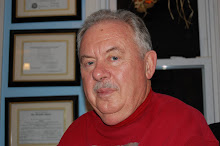Followers
Friday, June 27, 2008
Supreme Court decision on guns
I grew up in Colorado where every household had its collection of hunting rifles. My father had a 300 Savage semi-automatic which was too heavy to carry very long while out hunting. He also had a modified 9mm Mauser which had a 30.06 barrel on it. That gun was his pride and joy. There were several winters when the only meat we had was the game my father killed with those guns. The only gun I could use was a lowly .22. When I was old enough to have my own hunting rifle, my dad bought me a 32 special Winchester, one of the finest rifles of its kind. I still have the rifle but I haven't fired it in years and keep no ammunition in the house for it. I have no desire to go hunting, but I have friends that get a great deal of enjoyment from the practice.
The Supreme Court made the right decision. Our founding fathers understood the importance of having your own weapons for food supply and self-protection. Criminals always have the ability to find weapons regardless of the law. The law-abiding person should not be denied his rights just because some nut runs into the post office and shoots the place up.
Years ago after President Richard M. Nixon left office and his Vice-President Spiro Agnew also was removed from office, the office of the president fell to Gerald Ford. Gerald Ford was a zero as a president. He didn't do anything significant nor did he do anything bad. He had the misfortune of two attempts on his life. Which brings us to gun control.
Gerald Ford along with other Republicans came to Grand Junction Colorado to provide support for the Republican candidates that year. Before he arrived the Secret Service came to town to scope out the situation. The Secret Service was not in town long before they sent word back to Washington that they needed to beef up security in Grand Junction, a sleepy little college town of around 80,000 people in Western Colorado. Why were they concerned? "This is an armed camp over here! Every pickup has two to three high powered weapons hanging in the back window." What they failed to realize was that it was hunting season. It was also a status symbol to show off your arsenal in the back of your pickup. If it had been necessary to protect the president these men and women would have been first with their high-powered guns to defend the president and the constitution. He was not in danger, but in one of safest places on earth for an American president.
Many extra Secret Service were brought in. Sharp shooters were posted on the tallest buildings along the route the president would follow. But there were no incidents. Grand Junction was not made up of thieves, killers, and assassins, but just good old common folk that enjoyed their guns.
As a footnote, not one candidate that Ford campaigned for in Colorado was elected. Gerald Ford would maintain a home at Vail, Colorado for years. He probably never knew the "danger" he faced in Grand Junction.
Wednesday, June 18, 2008
Death with Dignity
Undoubtedly this will be a law in all 50 states based on false images of helping people.
First, you need to realize that the population over 80 is growing rapidly. Many of these people are in nursing homes that cost either the person or the government $3000.00 a month. The average person in a nursing home could be viewed as only a burden and the concept of the sanctity of life gently floats out the window on the wings of a dove. Why not just put them to sleep permanently and save all that money?
Like Amos of old, I am not a prophet nor the son of a prophet. But I will assure you that once the Death with Dignity laws are passed it is only a matter of time when euthanasia will be conducted at the whim of the medical profession or the government to eliminate "unwanteds." I would encourage you to recall or read about the early efforts of Adolf Hitler to purify Germany. With abortion wiping out life before it is born by the millions and abortionists being protected by state and federal officials even when they are covering up the crime of incest, and now this bill, Death With Dignity, we are driving another nail in the coffin of our great nation.
One of the greatest theologians of the 20th century, Francis Schaeffer, predicted all this. Thankfully he is not around to see the fulfillment of his predictions.
http://seattlepi.nwsource.com/local/6420ap_wst_assisted_suicide.html
Thursday, June 12, 2008
Tornadoes in Kansas


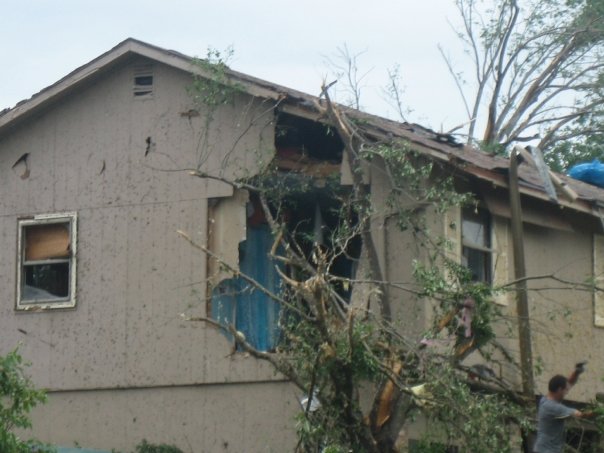
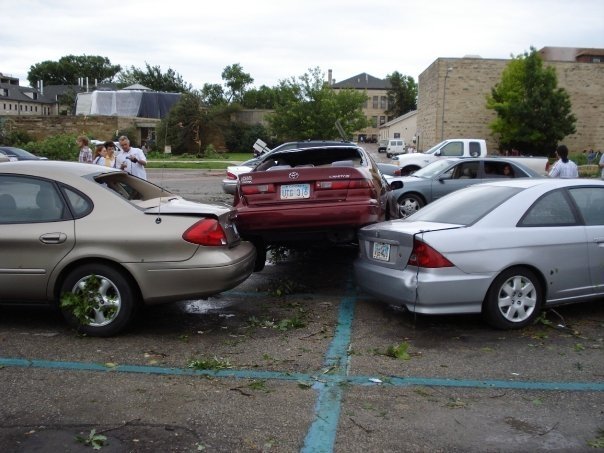
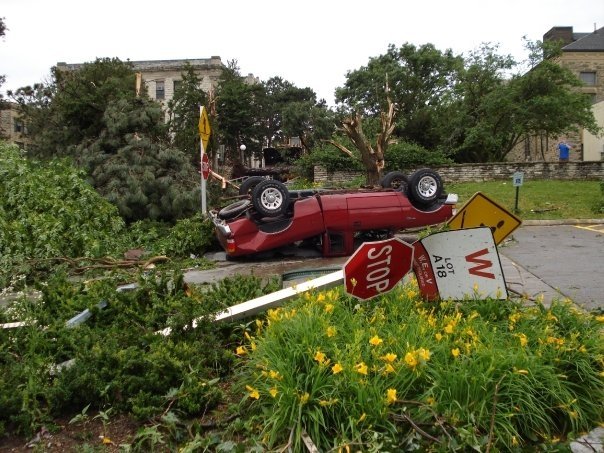
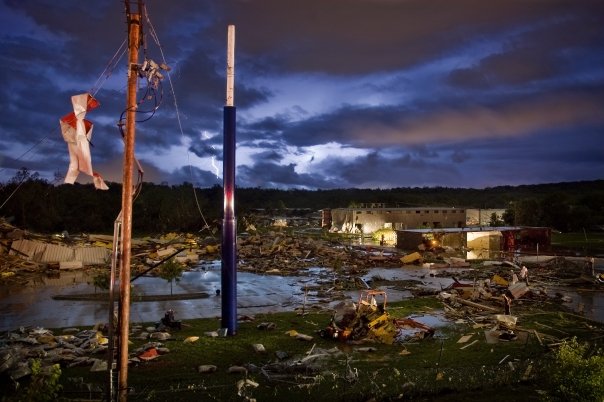
The Manhattan Mercury reported that it has been 40 years almost to the day since a tornado struck Manhattan. The Tornado started on the west side of town and destroyed 100 homes, most of them stripped to their foundations. It proceeded to hit Little Apple Toyota wrecking their building and scattering their cars. At the same site True Value Hardware disappeared from the scene and parts of it are scattered several miles to the east. I was out in Northeast Park this afternoon walking the dogs and saw debris that had come from the tornado. Midas Brake and Tire was also badly damaged.
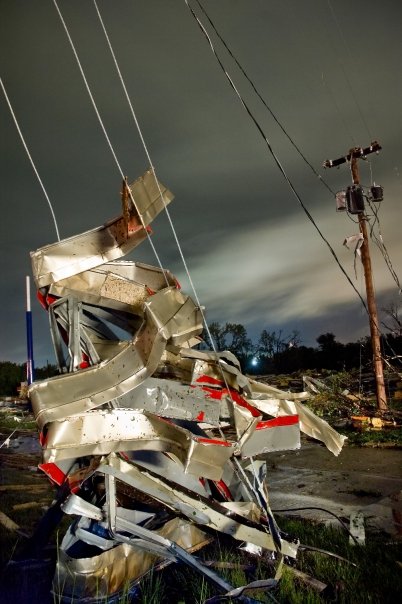
Next the tornado went up the hill smashing trees but doing little damage to homes. Finally it struck Kansas State University doing $20,000,000 worth of damage. President Wefald promised the school would be back in operation by August 15.
The town of Chapman lost 80% of its housing along with two school. In Iowa a Boy Scout camp was hit. Four boys died and many more were injured.
See pictures:
Wednesday, June 11, 2008
Wabaunsee tour with George and June Crenshaw
 On Tuesday, June 10, 2008, Arletta and I went on a day long tour with George and June Crenshaw. June did the driving and George played the role of tour guide as we explored the history of this county. The Crenshaws live at the end of Tabor Valley Road in Wabaunsee County. They have been in the cattle business for many years. George is well known among cattlemen for his Black Angus cattle that were prize-winners at cattle shows. George and June are also well known as good neighbors in the community where they live.
On Tuesday, June 10, 2008, Arletta and I went on a day long tour with George and June Crenshaw. June did the driving and George played the role of tour guide as we explored the history of this county. The Crenshaws live at the end of Tabor Valley Road in Wabaunsee County. They have been in the cattle business for many years. George is well known among cattlemen for his Black Angus cattle that were prize-winners at cattle shows. George and June are also well known as good neighbors in the community where they live.The first picture is of the camels that reside at the Crenshaw Ranch. They belong to their son Roy who lives in a barn loft apartment next to the house.
The next picture is of the Beecher Bible and Rifle Church in Wabaunsee. The church was organize June 27-28, 1857 and built 1859-62. The original structure is of native stone. Several years ago repairs were made to the outside to fill cracks that had developed.
Until 1854, when Kansas was opened for settlement, the spot on which this old landmark church stands was just part of a vast ocean of tall prairie grass, under the ever-changing skies. To the north lay the Kaw River, crowding the bluffs beyond. A few miles to the east stood hills of spectacular beauty, and the prairie rolled gently away toward the south and the west. The silence was broken only by the winds or by the song of a meadow-lark, and at night the music of the prairie wolves. The land belonged to the Indians, the roving herds of buffalo and antelope, and the great flocks of migratory birds.
The Kansas-Nebraska bill, passed in May1854, changed all that forever. It provided that Kansas could become a free state or a slave state, depending on how the people of Kansas voted. The race was on to stake out claims and to vote Kansas "free" or "slave."
Two years later in 1856, there were already about 60 people living within a few miles of the place called Wabaunsee, which meant in Indian, "Dawn of Day." It was here on the south bank of the Kaw River that a settler built a tiny store. In New England, "Kansas Fever" ran high. The people of New Haven, Connecticut raised money to send a group of colonists to Kansas, sixty men led by one of New Haven's most respects citizens, Charles B. Lines. These were well educated men, many with professional training. They left behind good job and homes to move to Kansas. They were not just adventurers, with little to lose by going west; they were men who were making a sacrifice for their ideals.
Before the Connecticut-Kansas Company left for Kansas, a meeting was held in North Church in New Haven. Professor Silliman of Yale pledged $25.00 for Sharps rifle for the company. At the time the Sharps rifle was one of the best available. Henry Ward Beecher, for whom the church would be named, was a noted minister in Brooklyn, NY. Beecher himself never did come to Wabaunsee. He pledged that his congregation would give the money for 25 rifles if the audience would provide money for 25 more. Mr. Beecher sent Mr. Lines $625.00 for the rifles. With the money came 25 Bibles, the gift of a parishioner. The rifles were not smuggled into Kansas in a box marked "Bibles."
The Company left New Haven at midnight on March 31 after a torchlight parade across town to the steamboat to New York. The next day they were on a train to St. Louis, a very uncomfortable trip of three days. From St. Louis they sailed up the Missouri River on the steamboat Clara, as far as Kansas City. There they bought thirty wagons and sixty oxen along with farm implements, tents, and provisions for thirty days. They started west on the Oregon Trail (which closely parallels Highway 24) and stopped for a few days in the free town of Lawrence, Kansas. They continued then to Uniontown, near present day Williard. Here they crossed the Kaw River and continued west on the south side of the river. Soon they reached the place their scouts had selected--Wabaunsee, "The New Haven of the West."
By late April of 1856 Wabaunsee suddenly became a tent city. Streets were laid out and city lots and tracts of land were divided up among the men of the company. Some of them joined in worship that was held on Sundays, first in tents, later in cabins, or dugouts. The new settlers found life very difficult. Some became ill or discouraged and chose to return home. Those who remained until August were called to go to the defense of Lawrence. Organized as "The Prairie Guard," under their captain, William Mitchell, they spent six weeks fighting the border ruffians.
The winter of 1856-57 was one of great suffering in Wabausee. Things appeared more hopeful in the spring when wives and children came to join their husbands. Now that a permanent settlement seemed assured, there was also the desire for a permanent church location. In late June of 1857 fifteen of the members of the Colony and thirteen other settlers met to organize the "The First Church of Christ in Wabaunsee." The Rev. Harvey Jones was the first pastor. Of this group of 28 charter members, nine were women.
After two years of fund raising for a church building, primarily in New Haven, they started construction of the sturdy stone church that still stands in Wabaunsee. The stones were hauled from quarries on sledges drawn by oxen. The mortar was mixed by hand. The long shingles, called "shakes" were made with crude hand tools. The rows of straight backed pews were divided down the center of the church by a low wooden partition that separated the men from the women. From the balcony across the rear of the church a latter led to the belfry. The church yard was edged with hitching posts, and there were newly planted trees and lilacs in appropriate spots.
The new church was dedicated in May of 1862. By then many of the members had gone to fight in the Civil War. Soon there were only a few men and boys to carry on the work in Wabaunsee. After the war was over the town began to grow again. It never became the great city the people from New Haven envisioned, but the area grew into a thriving farm community. The church became the largest and most influential Congregational churches in Kansas. Only a few of the Connecticut families remained to raise their children in Kansas, but the few that remained became very influential in the community and the state.
The pioneers of Wabaunsee sent their children to Washburn College in Topeka or to Kansas State Agricultural College to become teachers, ministers, or missionaries. These young people went to faraway places to work, but never forgot Wabaunsee. When the church needed repairs they always gave generously to assist the Willing Workers Society. This group of church ladies who were forever busy with ice-cream socials or oyster suppers raising support for the minister or mortgage payments on the parsonage.
In 1907 old friends of the church came from far away to help celebrate the 50th anniversary of the First Church of Christ (Congregational) in Wabaunsee. Only two of the original company lived in Wabaunsee at the time, but they both played a large part in the Jubilee celebration.
In 1913 a renewal of interest developed in the church due to a new minister who came to start an experiment in rural development. The Rev. Anton Boisen organized people to build sidewalks, improve the church yar and the cemetery as well as to better their economic and social lives.
The population continued to dwindle. By the time the First World War ended they were no longer able to afford a resident minister. Now occasionally there would be guest ministers and occasional joint services with the Methodist church. An effort was made to merge the two churches but the project failed. Soon the little stone church was empty. The last entry in the record book was made in 1927.
The descendents of the "Beecher Colony" organized the "Old Settlers Association" in 1932. The last Sunday of August was designated "Old Settlers' Day." Throughout the years the "Old Settlers" gathered on this day and Decoration Day to reminisce and to honor men and women who had made the church a symbol of freedom around the world. Homecoming continues to be celebrated on the last Sunday in August.
The church and homes in the area were part of the Underground Railway to help slaves escape to the north. A home not far from the church had two hiding areas which would hold two people each for this very purpose.
In the late 1800s the government said it would pay 40 cents a rod for stone fences to be built. A rod is 16.5 feet in length. A hard working man might put up one or two rods a day.
Saturday, June 7, 2008
Treaty of Tordesillas June 7 1494
Here is the article from Encyclopedia Britannica:
In 1493, after reports of Columbus' discoveries had reached them, the Spanish rulers Ferdinand and Isabella enlisted papal support for their claims to the New World in order to inhibit the Portuguese and other possible rival claimants. To accommodate them, the Spanish-born pope Alexander VI issued bulls setting up a line of demarcation from pole to pole 100 leagues (about 320 miles) west of the Cape Verde Islands. Spain was given exclusive rights to all newly discovered and undiscovered lands in the region west of the line. Portuguese expeditions were to keep to the east of the line. Neither power was to occupy any territory already in the hands of a Christian ruler.
No other European powers facing the Atlantic Ocean ever accepted this papal disposition or the subsequent agreement deriving from it. King John II of Portugal was dissatisfied because Portugal's rights in the New World were insufficiently affirmed, and the Portuguese would not even have sufficient room at sea for their African voyages. Meeting at Tordesillas, in northwestern Spain, Spanish and Portuguese ambassadors reaffirmed the papal division, but the line itself was moved to 370 leagues (1,185 miles) west of the Cape Verde Islands, or about 46°30¢ W of Greenwich. Pope Julius II finally sanctioned the change in 1506. The new boundary enabled Portugal to claim the coast of Brazil after its discovery by Pedro Álvares Cabral in 1500. Brazilian exploration and settlement far to the west of the line of demarcation in subsequent centuries laid a firm basis for Brazil's claims to vast areas of the interior of South America.
"Tordesillas, Treaty of." Encyclopædia Britannica. 2008. Encyclopædia Britannica Online. 7 June 2008 <http://www.britannica.com/eb/article-9072929>.Friday, June 6, 2008
MCC and the community of Manhattan
First, the Jolliffe Hall project is underway. The inside at the moment is being complete removed to make ready for the new chapel and library that will go in. The demolition derby will last about six weeks. Then the reconstruction phase will begin. The finish date for the Jolliffe Hall project is June 18, 2009. The new building with have an extension to the south which will house stairs and an elevator for the building.
Wednesday, June 4, 2008
Don't folow the crowd--Moses
We can cite a multitude of examples from the Bible and from history that prove that for the most part the majority is usually wrong. Thus when someone presents anything about which the majority says it is the thing to do or believe, I tend to shy away. God's people have always been in the minority and nothing says it will every change. Now, if we want to be on the wrong side, then we should choose the majority opinion.
Majority opinion sees nothing wrong with adultery, pornography, same-sex marriages, abortion, euthanasia, and a host of other social evils. People who take a stand against these things from a biblical point of view are in the minority and are judged "narrow-minded bigots."

